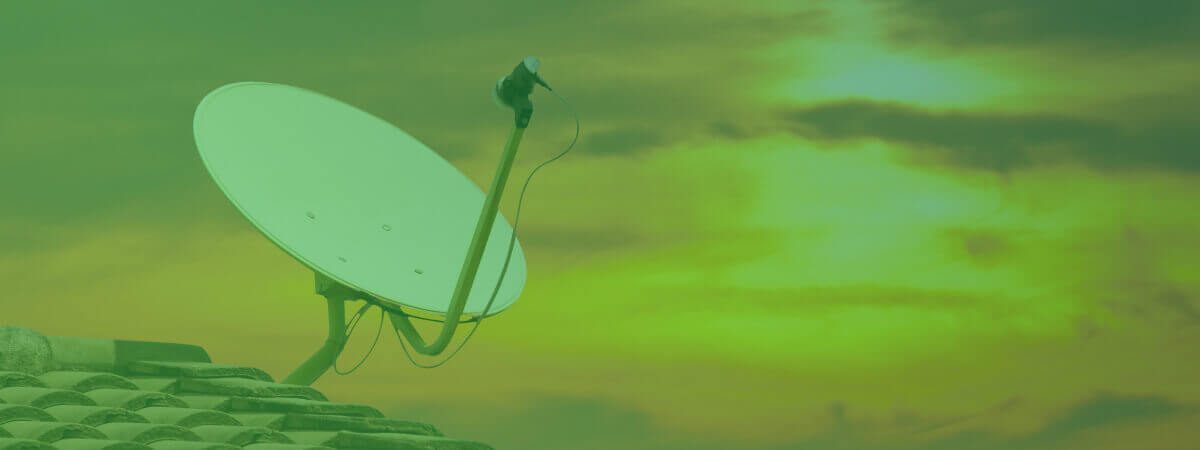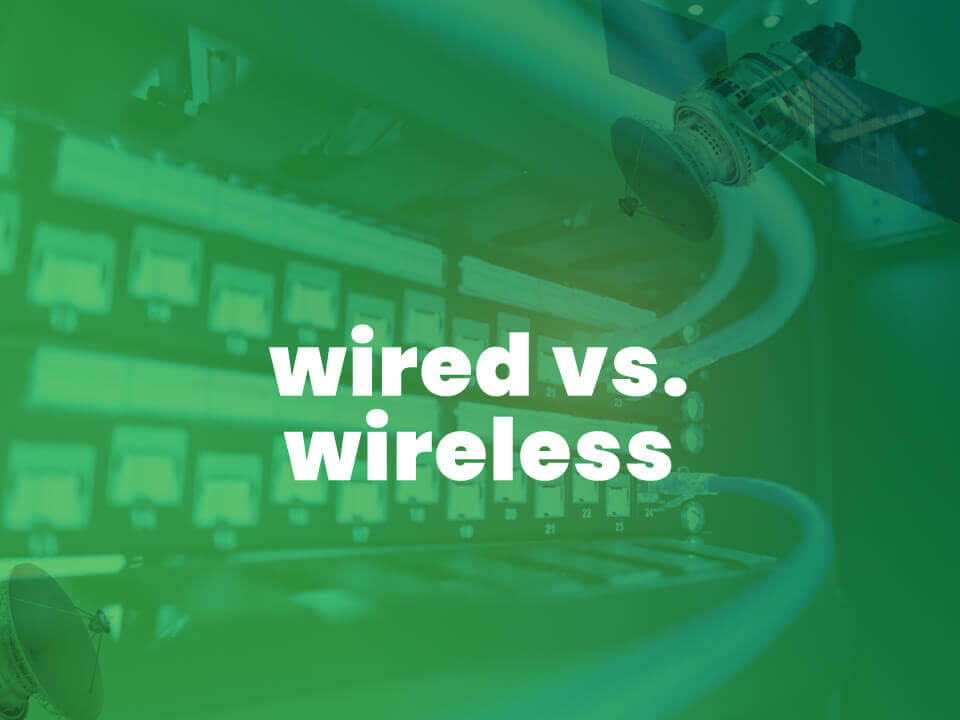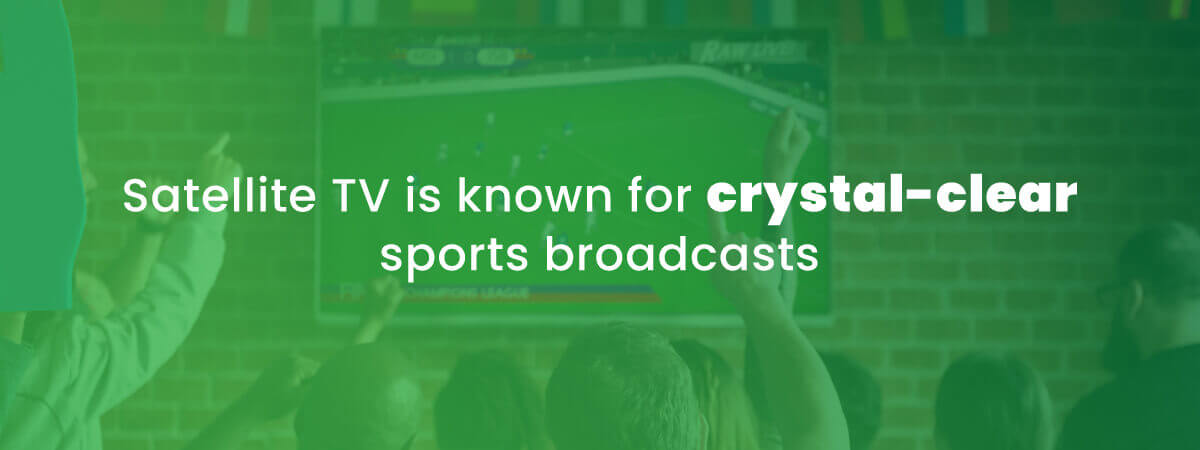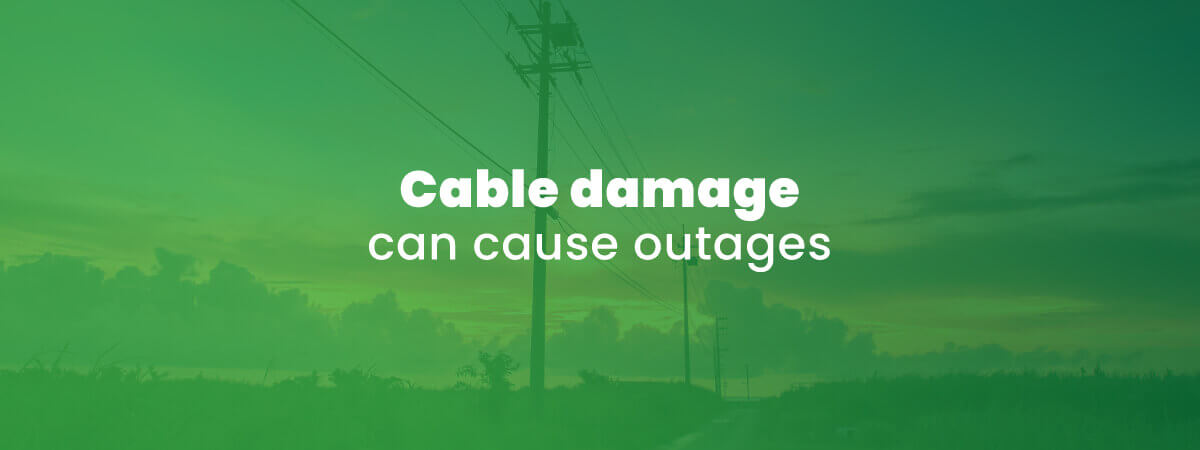DISH vs Cable: Comparing Satellite TV with Cable TV

Table of Contents
Live TV programming is just the beginning of the offerings when you sign up for TV service. In 2023, you have so many choices in television entertainment that it can be downright bewildering. Here, you can learn the pros and cons of your TV service options as you compare DISH vs cable TV.
Understanding Cable and Satellite TV Today
Satellite TV providers and cable TV providers use completely different technologies. The tech differences between each TV service type may determine which one you want for your home. But there are other factors to consider such as pricing, channel selection, extra fees, and contracts. Read on to learn some fundamental differences between cable and satellite providers, and how to make the best choice for your household.
How Satellite TV Works
Satellite TV is delivered to your TV set wirelessly, through radio waves. Whoever is making the programming (the channel), transmits their signal to a central broadcast center building.
That broadcast center collects all the programming and sends the signals 22,000 miles out into space to a satellite. That satellite transmits the signals back down to homes across the satellite’s coverage area.
To get your satellite TV service, your home will need a satellite dish, which is a special kind of antenna designed to “catch" those radio signals from the satellite. Your satellite dish catches the signal and sends it indoors to your receiver and your TV.

How Cable TV Works
Cable companies now have two major ways of delivering their TV service. A cable provider will either use copper coaxial cable wiring or a hybrid of copper and fiber optic cables.
Both copper and fiber optic are kinds of underground wiring that run a wire directly to your cable box supplied by the cable provider. The cable box descrambles the signal so your TV can read it as clear TV programming.
Like satellite TV providers, cable TV providers do not create their own programming. They receive programming from their channels in a variety of ways, and collect it at a broadcasting station called a “head-end." The station sends it out to customers through copper and fiber-optic wires running through nodes in each neighborhood.
Though most cable providers now include some fiber optic lines in their system, the line that runs to each individual home is copper coaxial cable. That is why you will get a coaxial cable connector to plug into your box.

The Bottom-Line Difference Between Cable and Satellite TV
There’s one basic difference that sets apart cable and satellite providers.
Cable TV must have wired infrastructure that runs to your neighborhood and home.
Satellite TV is wireless and can broadcast to almost any home in America.
This simple difference will help you understand the rest of the information in this guide if you’re choosing between satellite TV and cable TV.
Pros and Cons of Satellite TV
Satellite TV: Availability
The major strength of satellite TV is its almost universal availability across the United States. If you have an unobstructed view of the southern sky, you can get satellite TV. No matter how far out of town you live, on a farm, island, or mountainside, you can still get the best of today’s entertainment including sports, movies, and more.
This is a big contrast with cable TV, which is often not available in rural or remote areas. For that reason, satellite companies have been trusted to serve rural households for decades.
Satellite TV: Reliability
A satellite dish can sometimes affected by signal interference from bad weather. However, DISH TV has over 99% signal reliability and a money-back guarantee for any signal interruptions. So with a satellite provider like DISH Network, you’ll have a history of reliable service to count on as well as a guarantee.
Satellite TV: Picture Quality
Satellite television has long been known for the quality of its broadcast images. When you think of crystal-clear broadcasts of sports games on large TVs that have been around for decades, you’re thinking of satellite images. Satellite images do not have to be compressed for transmission the way cable TV images do, so the images are higher quality.
HD and Ultra HD capability are determined partly by your TV set. In general, though, satellite TV services can transmit at the highest quality your TV can receive. Satellite TV from DISH can even show a view called Sports Bar, where you can watch 4 games at once in HD on your 4K television.

Satellite TV: Channel Selection
Either cable or satellite TV will provide you with a huge selection of channels. But on the whole, satellite TV has more channels than cable television. In addition, satellite providers tend to offer more channels at lower prices in their first-tier plans.
One area in which DISH satellite TV has always run far ahead of the competition is sports programming. For sports fans, there is no contest between what is available with a good satellite TV plan and the much more limited selection with cable TV. The contrast is even sharper now that DISH has expanded its NFL Sunday Ticket.
Pros and Cons of Cable TV
Cable TV: Availability
Cale TV is available in most densely populated areas. So, if you live in a city or a medium sized town, you will probably have at least one cable TV option. But cable companies must have wiring not only at your home but throughout your entire neighborhood and all the way to a broadcasting station. That means that many customers in small towns or rural areas will not have service options from any cable providers.
Cable TV: Reliability
Cable television is usually very reliable. However, widespread outages may occur from accidents such as the cutting of underground cables by construction crews. Weather can also bring down overhead cable wires. Though these outages are rarer than the bad weather that can affect satellite service, they tend to last longer. It may take hours or even days for the cable company to find and fix the problem.

Cable TV: Picture quality
Because cable data travels through compressed signals when it moves through coaxial cable, it can’t carry HD streaming. That’s why the connection for HD-capable signals is called an HDMI port and differs from the coaxial cable port.
Some cable providers such as Spectrum TV and Xfinity have begun to provide workaround solutions to offer certain shows in 4K. Usually, it requires a special app or an HD box. Sometimes, there are specific TVs (such as Apple TVs) that may also be the only compatible TVs for a cable provider’s 4K service.
In general, the question of your picture quality and Ultra HD will be much more complicated with cable providers.
Cable TV: Channel selection
Cable TV has large channel packages available, though not quite as wide a selection as satellite television. Still, there are more than enough cable channels to satisfy most watchers. The lowest-priced cable TV plans tend to include far fewer channels than the first-tier satellite tv plans.
Both cable and satellite TV plans will offer more of the most popular national TV channels and local networks than streaming service will offer.
DISH vs Cable TV: User Features
When it comes to the bells and whistles of user features, satellite television service from DISH has some definite advantages over cable television.
DISH is well-known for its leadership in DVR (Digital Video Recorder) technology. The DISH Hopper 3 has cutting-edge features that are not available from the DVR of cable TV providers.
For example, the DISH Hopper 3 allows users to record up to 16 shows at once, far more than any cable competitor.
Both cable and satellite providers allow you to watch your recorded content anywhere. But only DISH has the technology to let you watch 100% of your live TV channels anywhere on your mobile device. Mobile live TV is not an option from cable providers.
DISH also provides AutoHop to let you skip commercials during your favorite shows. No cable provider has a similar feature.
The DISH Hopper 3 has 500 hours of monthly storage (2 TB), while cable providers offer only up to 250 hours (1 TB).
Wireless receivers and Bluetooth audio capability come with DISH TV plans, but not with cable plans.
DISH TV also offers users easy recording for primetime content from ABC, CBS, NBC and FOX, which cable companies cannot provide.

Cable vs. Satellite TV: Pricing Plans and Additional Fees
Upfront monthly costs
For packages that include a wide channel selection (180+ channels), DISH and cable TV providers charge approximately equal monthly rates starting at about $80/month. Cable providers often have lower-priced packages with a very limited channel selection (anywhere from 10 to 50 channels not including the more popular national channels).
Contracts and price guarantees
DISH will require a commitment to a 2-year contract, where most cable companies require only 1-year contracts.
However, the longer contract for DISH TV comes with a major benefit from DISH. You get a 3-year price guarantee of no price increases. In other words, a year after your contract ends, you will still be paying the same price as when you started. In a time of significant inflation, this is a pretty attractive offer.
Most cable providers will only keep their prices constant for the term of your 1-year contract, then prices rise significantly in subsequent years. The DISH offer of a 3-year price guarantee is definitely an industry leader for any TV provider.
If you want a multi-year guaranteed rate that won’t suddenly spike an increase, satellite TV is the better choice.
 Additional fees
Additional fees
You will also want to check on any additional monthly fees. If you want to add a DISH Hopper DVR to your plan, it will rent for about $10-15 a month. Other equipment such as the Joey receivers will run about $5/month. The satellite dish and receiver do not require a rental fee.
Cable providers also charge for their extras, from $10 monthly for their DVR systems to additional fees for DVR storage. Sometimes a mandatory “technology" fee from cable providers will run about $10/month but will cover the cost of any technician visits.
Installation
If your home is already wired for a specific cable TV provider, you may be able to do a self-installation for free when you order service from the same provider. But often a cable will need to be run inside your house from the street, and that kind of cable installation will usually cost you about $100.
DISH offers free standard professional installation for satellite service in up to 6 rooms of the house.
Bundling and discounts
“Bundling" means ordering your television and internet service from the same provider. Bundling can often save you money. Cable providers may offer bundling of phone, internet service and TV.
DISH TV offers internet service through their DISH Internet Partners program.
FAQs: Cable vs. Satellite TV
How important is customer service in choosing a TV provider?
Customer service matters. As you enjoy your new TV service, you will want to have easy access to customer service reps. Check the ratings of your potential TV providers with objective third-party groups such as J.D. Power.com.
What benefits will I get from satellite and cable TV providers alike?
Both cable and satellite TV service will provide you with much better access to local networks than streaming services. In addition, satellite and cable TV have a wider channel selection that includes more comprehensive sports, music and movie options.
Best of all, cable and satellite television now include streaming services as part of their plans.
For example, DISH Network has a new Hopper Plus system that integrates live TV, recorded TV, streaming services, and Google Play into one user interface with a voice remote. Integrated into this service are specific channels such as Netflix, YouTube TV, Amazon Prime Video, and Peacock. This smooth user experience with no need to switch inputs or use multiple remotes is just not available with streaming TV alone.
What are the different kinds of High-Definition (HD) TV?
- 4K resolution: 4096 x 2160 pixels
- Ultra HD resolution: 3840 x 2160 pixels
- Full HD resolution: 1920 x 1080 pixels
- HD resolution: 1280 x 720 pixels
- Standard Definition (SD) resolution: 720 x 480 pixels













 Call
Call 

 Access Your Account
Access Your Account